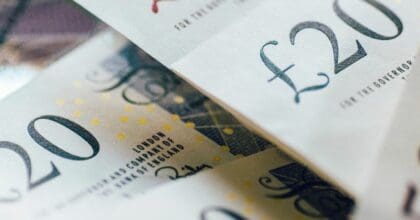-
Articles + –
Banks make a statement on paperless
US banking consumers have been eager to adopt self-service transactions when it adds convenience and flexibility to their lives. They have flocked to online and mobile banking and taken advantage of the advanced functionality of ATMs. In fact, Mintel’s Mobile Banking US 2015 report discovered that 50% of consumers do more than half of their banking on their computer or laptop and 13% do so on their smartphones. What consumers have been reluctant to do, however, is switch to paperless statements. According to Forrester, about half of consumers who are unwilling to forgo their paper statement reported that they will not do so because they want the paper statement for their records. Consumers also state that they are simply used to paper and see no reason to change, or that their bank does not require them to switch. As banks seek to overcome these objections they are focusing on communicating the increased security and decreased waste that online statements provide. Some banks use those messages along with an incentive to change behavior, while others try to establish the new behavior at the point of acquisition.
50% of US consumers do more than half of their banking on their computer or laptop
Consumers aren’t cashing in on bank incentives
Incentives have not been widely tracked in the paperless effort, but when they are, they typically are relatively low. For example, Chase has been offering a $5 incentive to any customer who will switch to paperless. The bank uses ubiquitous messaging, communicating via email, direct mail, statement inserts and website messaging to persuade customers to turn off their paper statements. Email is the prime channel for customer communication. Mintel Comperemedia ePerformance/eDataSource research shows that Chase sent approximately 11 million emails so far this year encouraging its customers to switch to paper statements. The subject lines of all email tracked included the $5 incentive, while rotating additional messaging. Through June 2015, three subject lines related to paperless statements have been used: “Earn $5 – Go paperless and get 24/7 access to your accounts;” “Go paperless, Get $5 with your new Chase checking account;” and “Hurry! Earn $5 by the end of the month.”
The average email read rate in financial services is 41%, and the paperless emails sent by Chase garnered read rates between 29% and 43%. All of the emails dedicated content to reiterating anytime access, that online statements reduced clutter and that they were, in fact, more secure than paper statements. Chase was also one of the few banks to clearly indicate that statements were available for 7 years. Through its online banking site, Chase took a more assertive stance and assumed that customers would want to opt-in to paperless. In May, when customers logged into the website, they were presented with a message that stated, “Action Required. Please update your statement delivery method. Click ‘accept’ to update your preferences to paperless statements.” The “accept” button was highlighted and, instead of a decline button, the other option read “manage preferences.”
In addition to urging banking customers to sign up for paperless statements, Chase also encouraged its mortgage customers to go paperless. Instead of a cash incentive, though, the bank offered a chance to win $35,000 with its “Bring it Home” sweepstakes. Again, the bank surrounded customers with the message by sending emails and including it in direct mail and statements. While sweepstakes are common, Mintel Comperemedia research finds that consumers are less likely to open emails with subject lines that promise a chance to win, rather than a definite reward in return for a qualifying activity.
New messaging may lead to increased adoption rates
Despite the desire to move customers to paperless statements, banks are largely relying on the messaging they have been using for several years. To increase adoption rates, banks could experiment with several different tactics. The incentives used to change behavior from paper to paperless have long been set at $5. Since $5 likely isn’t enough to persuade customers who don’t want to be inconvenienced, and banks stand to save that much in the first month of paperless alone, there’s opportunity to significantly increase the incentive to something more sizable and meaningful to customers.
First Merit took an interesting approach involving a heftier incentive in its acquisition efforts. The bank promised that its checking account was the “makes my life easier account.” A $150 cash incentive was offered, with qualifying activities: enrolling in direct deposit, using online banking or bill pay, and opting for paperless statements. Customers would get $25 for participating in one service, $75 for two services and $150 for all three services. Key Bank also had a unique approach in converting customers to paperless; as soon as a customer enrolled in its online banking, the bank sent an email welcoming them and suggesting other great online and mobile options, including online statements. ePerformance/eDataSource research highlights that Key Bank’s welcome emails got high read rates of 50%, compared to the average of 41%.
Regardless of the incentives, consumers overwhelmingly report that they are wedded to their paper statements for record keeping. There is a huge opportunity for banks to make it more clear that paper statements are available through online banking for 7 years, the amount of time consumers are advised to keep records. Banks could also make the statements more obvious on their websites. Currently, the statements are several clicks beyond log-in. Furthermore, banks should consider promoting paperless statements from the point of acquisition, resulting in higher adoption rates and requiring less investment to change behavior.
After talking about paperless for years, it’s time for banks to take more aggressive action to convert customers and create new approaches, rather than rely on the same “more security, less clutter” messages that have failed to resonate with consumers.
Susan Wolfe is the VP of Financial Services at Mintel Comperemedia. She focuses on the banking and investment industries, bringing over 20 years of experience in marketing and research to her role.
-
Mintel StoreGet smart fast with our exclusive market research reports, delivering the latest data, innovation, trends and strategic recommendations....View reports
-
Mintel LeapMintel Leap is a revolutionary new AI-powered platform that will transform your research process....Book a demo







































